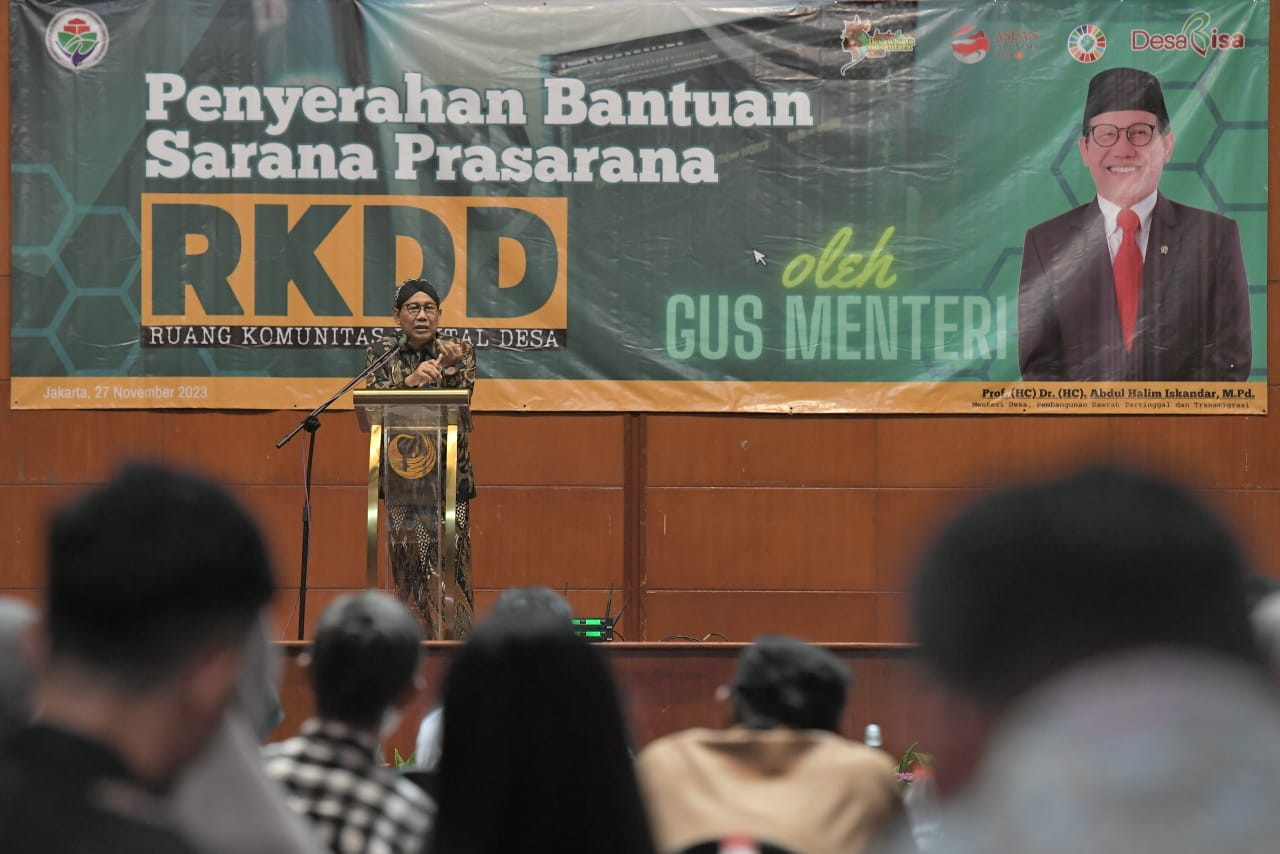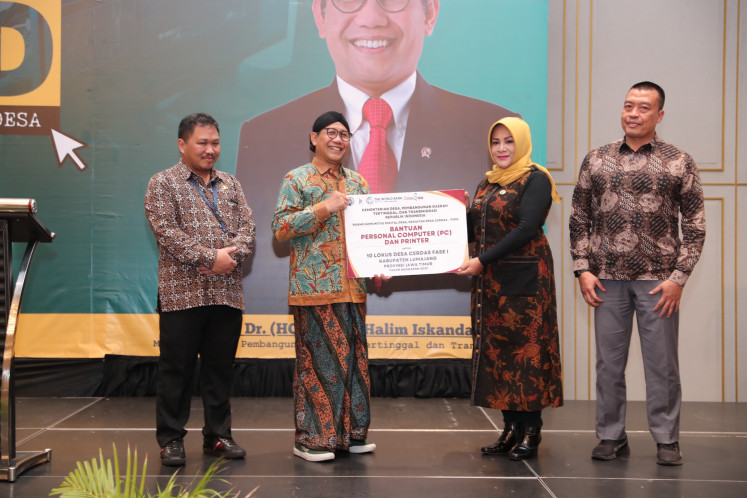Popular Reads
Top Results
Can't find what you're looking for?
View all search resultsPopular Reads
Top Results
Can't find what you're looking for?
View all search resultsSmart Villages catalyzing citizen welfare
Change text size
Gift Premium Articles
to Anyone
P
eople visiting villages today can observe for themselves the increasing fairness in rural development and the growing prosperity of its inhabitants. With the Village Law, the strategy for equalizing national development stems from the nurturing of villages.
Through the Village Fund (Dana Desa), the initiative extends the reach of development of villages across the archipelago. In 2011, only 54 percent of villages engaged in development activities, primarily through the PNPM Mandiri Perdesaan initiative. Now, 100 percent of villages participate in development projects funded by the Village Fund.
An increase in the Village Budget (APB Desa) has been supported by the Village Fund and the Village Fund Allocation (ADD). In 2014, the average APB Desa was Rp 329 million per village. As of 2023, it has increased fivefold, averaging Rp 1.6 billion per village.
In turn, the income of rural residents has also risen by 80 percent, from Rp 573,000 per person per month to Rp 1.03 million per person per month. In comparison, during the same period, urban residents only experienced a 53 percent increase.
Smart villages
Over the past decade, desa cerdas (smart villages) have become the preferred national development strategy in countries such as India, China and South Korea, with the aim of accelerating the welfare improvement of rural residents. It's estimated that what would have taken 40 years to achieve can now be achieved as fast as 10 years through information technology.
Telematics infrastructure, computer facilities and the ease of developing information technology have accelerated the development of Indonesian villages.
Indonesia’s Desa Cerdas program will be the main engine driving fair and prosperous rural communities for the next five years. Currently, 47,254 villages in Indonesia practice Desa Cerdas principles, ranging from village-specific websites and micro-data processing to online village flood monitoring, theft monitoring, online village transportation and online village commerce.
One of the primary characteristics of Desa Cedas is detailed and continuously updated village data, including resident names, addresses, families and the environment. Villages can access and download their data through the Sistem Informasi Desa (Village Information System) at sid.kemendesa.go.id.
Secondly, technology-based infrastructure, facilities and applications are implemented in villages. Currently, the village-owned enterprise (BUMD) financial reporting application is available and will have a free village government correspondence application in the near future. All these applications are open for development and integration with online trading and central government licensing requirements.
The third characteristic is the strengthening of local institutions. Alongside digital ambassadors, digital cadres and village facilitators, village heads and officials are developing Digital Community Spaces (RKDD), which could be in the form of new institutions or part of existing ones, enhancing digital technology management tailored to the village's needs.
Supporting facilities
To reinforce village digitization, the Villages, Disadvantaged Regions and Transmigration Ministry has developed the Desa Cerdas program. A total of 3,000 villages were selected by regional governments in Phases I, II and III. Additionally, 600 digital ambassadors were recruited to support district-level policies, along with 3,000 digital cadres to assist villages.
For Phase I, 235 villages were selected. These villages will receive Smart Village facilities, including computer sets and printers, throughout November and December 2023. They will also receive annual support funding of Rp 20 million for their Digital Community Spaces. Phase II and III villages will follow suit in the coming months.
Specifically, the contracts for Phase I digital ambassadors and digital cadres have been extended to continue supporting the development of Digital Community Spaces.
Initially, the World Bank only approved the program loan as a training initiative. Villages, Disadvantaged Regions and Transmigration Minister A. Halim Iskandar agreed to continue the program only if the training was accompanied by the provision of Desa Cerdas facilities, as without facilities and funding for the villages, the program would have to cease.
It took several years for the World Bank to meet the requirements set by the minister, though fortunately, Desa Cerdas in Phase I is now ready to receive Digital Community Space facilities. These facilities will be dispatched directly from the production warehouse to the villages no later than Dec. 10 of this year.
This article was published in collaboration with Ministry of Village, Development of Disadvantaged Regions and Transmigration












